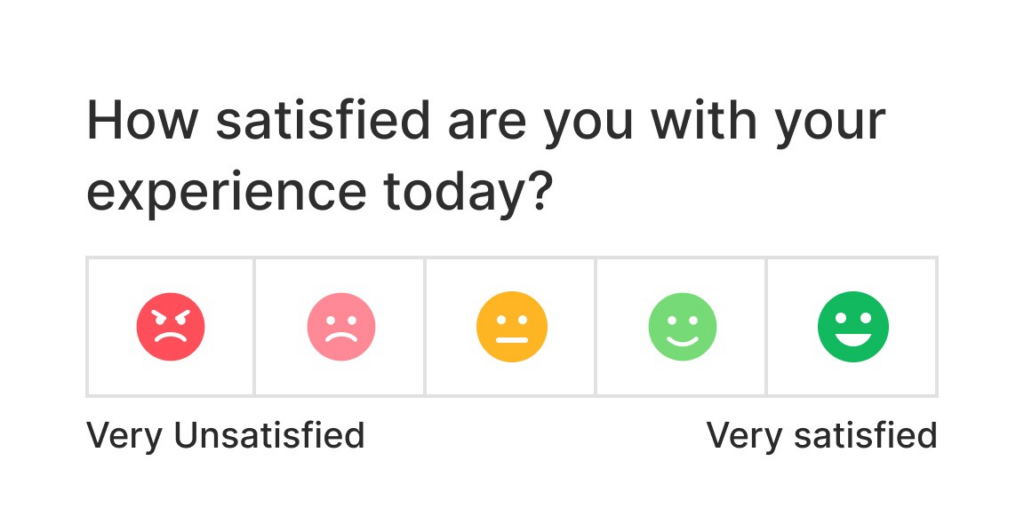Churn rate is a crucial metric that measures the rate at which customers or subscribers discontinue their relationship with a company or product over a given period of time.
Understanding and effectively managing this metric is essential for businesses to maintain a healthy customer base and ensure long-term success.
| Key Element | Description | Tips for Optimization |
|---|---|---|
| Understanding Churn Rate | A metric measuring customer or subscriber loss over time. | Regularly track and analyze churn to identify patterns and areas for improvement. |
| Calculating Churn Accurately | Involves measuring the percentage of customers lost within a specific period. | Ensure accurate customer counts and consider the specific time frame for meaningful insights. |
| Impact on Business Growth | High churn can significantly hinder growth and profitability. | Focus on retention strategies to maintain a healthy customer base and support growth. |
| Customer Satisfaction's Role | Key to reducing churn; satisfied customers are more likely to stay loyal. | Enhance customer satisfaction through quality service and regular feedback loops. |
| Strategies to Lower Churn | Includes targeted retention programs and improving customer service. | Implement programs that address specific customer needs and preferences to boost loyalty. |
| Common Mistakes in Churn Calculation | Mistakes can lead to inaccurate insights and misguided strategies. | Verify calculation methods and consider all relevant customer activities for accuracy. |
Understanding the concept of churn rate
In order to fully comprehend this concept, it is important to delve into its definition and understand its significance.
Churn rate, also known as customer attrition rate, quantifies the percentage of customers who no longer interact or engage with a company's products or services within a specific time frame.
Churn rate serves as a key performance indicator (KPI) that aids businesses in assessing their customer retention efforts.
By closely monitoring this metric, companies can identify patterns, trends, and potential issues that may be causing customers to discontinue their relationship with the brand.
Definition and importance
Churn rate can be defined as the proportion of customers who have ended their affiliation with a company over a given time period, often expressed as a percentage.
This metric offers valuable insights into customer behavior and helps businesses evaluate the effectiveness of their customer acquisition and retention strategies.
The importance of this metric lies in its ability to highlight weaknesses in a company's operations or product offerings, leading to critical improvements.
By understanding why customers are leaving, companies can implement targeted initiatives aimed at reducing churn and enhancing customer satisfaction.
Differentiating churn rate from other metrics
It is essential to differentiate this metric from other commonly used business metrics to clearly comprehend its significance and implications.
While metrics like customer acquisition cost and customer lifetime value provide valuable insights, churn rate focuses specifically on customer attrition.
In fact, it serves as a direct indicator of customer satisfaction and loyalty. It reflects the effectiveness of a company's efforts in retaining customers and can significantly impact overall business performance.
By distinguishing this from other metrics, companies can gain a more comprehensive understanding of customer behavior and make informed strategic decisions.
Influencing factors
Several factors play a crucial role in influencing this metric. By identifying these factors, companies can proactively address customer needs and mitigate the risk of losing valuable customers.
Customer satisfaction
Customer satisfaction is an integral component in determining churn rate. Dissatisfied customers are more likely to discontinue their relationship with a company and seek alternatives.
Therefore, it is imperative for businesses to focus on delivering exceptional customer experiences to reduce customer attrition.
Ongoing evaluation of customer satisfaction through surveys (e.g. NPS), feedback mechanisms, and customer support interactions can provide valuable insights into areas that require improvement.
By addressing customer concerns and enhancing overall satisfaction, businesses can positively impact this metric and foster long-term customer loyalty.

The impact of product quality
The quality of a company's products or services plays a significant role in customer retention. Customers who perceive a decline in product quality or find better alternatives in the market are more likely to churn.
Regular product evaluations and iterative improvements can help businesses ensure that their offerings meet or exceed customer expectations.
By continuously striving for product excellence, companies can not only enhance customer loyalty but also reduce customer attrition.
Calculating churn rate
Calculating this metric accurately is essential for businesses to gauge their customer retention efforts and measure progress over time. The following step-by-step guide provides a clear framework for the calculation:
Step-by-step guide to calculation
- Determine the time period for the calculation (e.g., monthly, quarterly, annually).
- Count the number of customers at the beginning of the selected time period (Customer Count A).
- Identify the number of customers who discontinued their relationship with the company during the same time period (Customer Count B).
- Divide Customer Count B by Customer Count A.
- Multiply the result by 100 to obtain the churn rate percentage.

Following this step-by-step guide will enable businesses to accurately quantify and track their customer attrition, providing a solid foundation for customer retention strategies and ongoing improvements.
Common mistakes in this calculation
While calculating churn rate, it is crucial to avoid common mistakes that can lead to inaccurate interpretations or misguided strategies.
Some common mistakes to watch out for include:
- Excluding new customers or trials from the calculation, as this metric should reflect both new and existing customers.
- Incorrectly calculating the customer count at the beginning and end of the selected time period.
- Not accounting for customers who temporarily churned but subsequently resumed their relationship with the company.
By avoiding these common mistakes and ensuring accurate calculations, businesses can gain valuable insights into customer loyalty and identify opportunities for improvement.
The implications of high churn rate
A high churn rate can have significant implications for a business, impacting its growth potential, financial stability, and market reputation. It is crucial for companies to proactively address and mitigate the negative effects of high customer attrition.
How high churn rate affects business growth
A high churn rate directly affects business growth by impeding revenue generation and hindering customer base expansion. Acquiring new customers to replace those lost due to churn can be a costly endeavor that can slow down overall business progress.
Furthermore, a high churn rate can indicate underlying issues with a company's product, customer service, or overall value proposition.
By addressing these issues and improving customer retention, businesses can create a strong foundation for sustainable growth.
The relationship between churn rate and customer lifetime value
Churn rate and customer lifetime value (CLV) are closely intertwined. CLV measures the total value a customer brings to a company over the entire duration of their relationship.
A high churn rate not only reduces CLV but also hampers the potential for upselling or cross-selling opportunities.
Understanding the relationship between churn rate and CLV is crucial for companies as it highlights the importance of robust customer retention strategies.
By reducing customer attrition and extending customer lifetime, businesses can maximize long-term profitability and strengthen their market position.
Strategies to reduce churn rate
Effective strategies to reduce this metric can help businesses increase customer loyalty, improve customer lifetime value, and drive sustainable growth.
Implementing these strategies requires a comprehensive understanding of customer needs and a proactive approach to customer engagement.
| Strategy | Description | Example Companies |
|---|---|---|
| Customer Feedback Loops | Regularly gather and act on customer feedback to improve product and service offerings. | Slack, Airbnb |
| Personalized Marketing | Use data analytics to tailor marketing efforts to individual customer preferences and behaviors. | Netflix, Amazon |
| Proactive Customer Service | Offer support and check in with customers before issues arise to enhance satisfaction. | Zappos, Apple |
| Engagement and Retention Programs | Implement loyalty programs, rewards, and incentives to encourage ongoing engagement. | Starbucks, Sephora |
| Product and Experience Improvement | Continuously refine and enhance the product or service based on customer interaction and feedback. | Tesla, Adobe |
Improving customer service
Enhancing customer service plays a vital role in reducing churn rate. By prioritizing responsive and personalized customer support, businesses can address issues promptly, resolve customer concerns, and foster a positive customer experience.
Implementing proactive customer service measures such as regular follow-ups, product usage guidance, and loyalty programs can further strengthen the relationship between businesses and their customers.
These efforts can result in increased customer loyalty, reduced attrition, and enhanced overall customer satisfaction.

The role of customer retention programs
Implementing customer retention programs can significantly contribute to churn rate reduction. By rewarding customer loyalty, businesses can incentivize customers to remain engaged and connected with their products or services.
Well-designed customer retention programs may include exclusive offers, discounts, loyalty points, or personalized recommendations.
These initiatives not only strengthen the bond between companies and customers but also create a sense of value, making it less likely for customers to churn.
Conclusion
In conclusion, churn rate plays a crucial role in measuring customer attrition and evaluating the effectiveness of customer retention strategies.
It is essential for businesses to understand and monitor churn rate to ensure sustainable growth and long-term success.
By implementing strategies to reduce churn rate, such as focusing on customer satisfaction, product quality, and proactive customer service, businesses can enhance customer loyalty, drive profitability, and solidify their position in the market.
Embracing a customer-centric mindset and continuously improving customer experiences are key to reducing churn rate and fostering business growth.
Turn churn into growth with Cello
As you strive to minimize churn rate and maximize customer retention, why not transform your existing users into powerful growth engines? With Cello, you can effortlessly integrate a peer-to-peer referral program into your SaaS product, turning your users into advocates who drive your viral growth. Experience the seamless integration, automated rewards, and comprehensive management tools that make Cello the perfect partner for user-led expansion. Witness how brands like tl;dv have skyrocketed their monthly referral signups using our platform. Ready to see how Cello can redefine your growth strategy with a success-based pricing model that aligns with your business achievements? Book a demo today and start converting churn into your next opportunity for growth.
Resources
Related Articles

7 Best B2B Referral Software (2025 Guide)
Which referral software should I choose? In the world of referral marketing, choosing the right ...

Scaling and Maintaining a B2B User Referral Program
Learn how to set the right incentives for B2B SaaS user referral programs

What are User Generated Content Growth Loops?
User Generated Growth (UGC) loop is a growth engine where users create content that attracts ...

